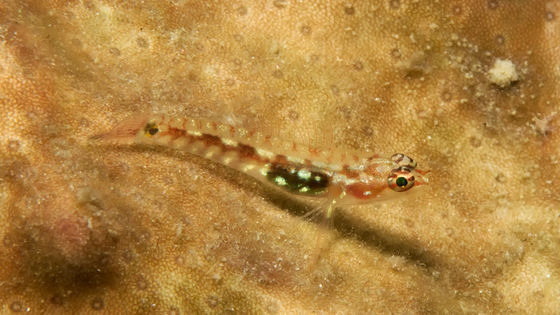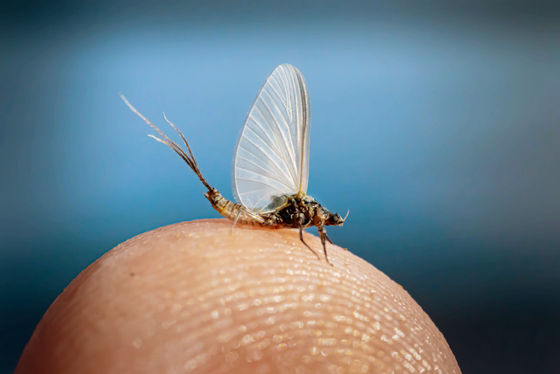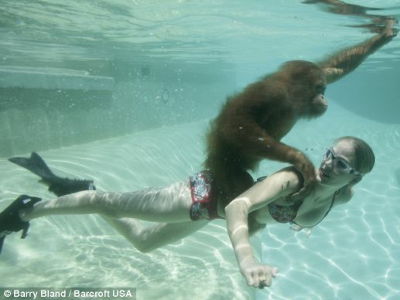The mayfly's head is packed full of eggs, and what experts tell us is the mayfly's surprising strategy for reproducing in a lifespan of just 5 minutes.

by
Some living things can live for over 10,000 years , while others end their lives in a very short period of time. Experts say that some mayflies, which are representative of short-lived animals, have an amazing ecology that allows them to reproduce as much as possible in just a few minutes from the time they emerge until the end of their lifespan. talked.
Which animal has the shortest life span? | Live Science
https://www.livescience.com/animals/which-animal-has-the-shortest-life-span
According to the science news site Live Science, the shortest lifespan of all vertebrates is Eviota sigillata, a goby fish that lives in the sea. This fish spends three weeks of its life in the open ocean as a fry, then matures on a reef for one to two weeks, and only lives for three and a half weeks as an adult. Therefore, the entire lifespan of Eviota sigillata is only 59 days at most.

by
This is a difficult question when it comes to the shortest-lived of all animals, including vertebrates, but one likely candidate is the adult mayfly. Mayflies first hatch from eggs and develop into larvae called nymphs in water. Then, in the final stage of their life cycle, when they become subadults or adults, they develop wings and mate.
Many mayflies can live for less than 24 hours with their wings on, and the species Dolania americana has the shortest recorded adult lifespan, with males living for less than an hour after emerging. Females only have 5 minutes. In contrast to their short lifespan as adults, their nymph phase is long, and this species of mayfly spends up to two years on the river bottom.
Mayflies generally migrate from water to land to air as a subadult stage, and then reproduce as adults, but because they do not have a functioning mouth or digestive system at any stage, they do not have a fully functioning mouth or digestive system. lives only on the energy they stored when they were nymphs.
Luke Jacobus, an aquatic insect researcher at Indiana University-Purdue University Columbus (IUPUC), told Live Science: 'Because they don't have bulky digestive organs, females have a lot of space inside their bodies to hold their eggs. I have seen individuals so full of eggs that they even had eggs inside their heads.One female can lay up to 10,000 eggs, and in this way, mayflies have a short adult life. We are using our lifespan efficiently.'

Some people may wonder why they live so fast, but according to mayfly expert Jacobus, the more appropriate question to ask is, 'Why do we need to live so long?' thing. 'If you look at ancient fossil mayflies, they're pretty much the same as modern mayflies. Their system worked really well for them,' Jacobas said.
Mr. Jacobus is not the only one fascinated by the ephemeral yet courageous way of life of mayflies. According to Heath Ogden, who studies mayfly evolution at Utah Valley University, mayflies first appeared on Earth about 350 million years ago.
Regarding the reason why mayflies chose a short-lived life, Ogden said, ``Evolution is like tinkering with a machine, making small improvements and repairs. Mayflies spend a lot of time in their nymph days undergoing trial and error in their evolution.'' They must have discovered that it's a great strategy to invest, gathering all the nutrients they need while they're nymphs, and then flying off to mate and lay eggs as adults. I have decided,” he said.
Related Posts:







